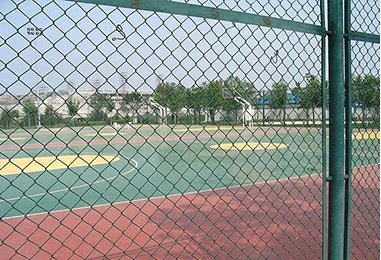 TEL:
+86-13102802206
TEL:
+86-13102802206
 Email:
fencenetting@china.com
Email:
fencenetting@china.com
 Language
Language
 TEL:
+86-13102802206
TEL:
+86-13102802206
 Email:
fencenetting@china.com
Email:
fencenetting@china.com
 Language
Language


The Aesthetic and Functional Appeal of Interior Gabion Walls
In the realm of contemporary interior design, the integration of natural elements has become a key trend. Among the myriad of design options available, interior gabion walls stand out for their unique blend of aesthetics and functionality. A gabion wall, traditionally used in outdoor settings for erosion control and landscaping, consists of wire mesh cages filled with stones or other materials. When adapted for interior use, gabion walls can transform indoor spaces, providing not just structure but also a distinctive visual appeal.
What is a Gabion Wall?
Gabion walls are cylindrical or rectangular cages made from materials like hexagonal wire mesh, stainless steel, or galvanized steel, filled with stones, rocks, or even recycled materials. Originally intended for civil engineering applications, these structures are now making their way into residential and commercial interior spaces. The versatility of gabions allows them to serve multiple purposes, from decorative features to functional room dividers.
A Unique Design Statement
One of the most compelling reasons to consider gabion walls in interior design is their exceptional aesthetic quality. The organic textures and colors of the stones create a natural look that can soften industrial spaces or add a rustic charm to modern interiors. Gabion walls can be designed to fit any style from minimalist to eclectic, they provide a tactile element that is often missing in contemporary design.
Interior designers and homeowners alike can play with different fillings—smooth river stones, rough granite, or even colored glass—to create a custom appearance. This adaptability means that a gabion wall can be a central design feature, adding character and defining the theme of an entire room.
Practical Applications

While the aesthetic appeal of interior gabion walls is undeniable, their practical applications are equally impressive. Gabion walls can be used as partitions to delineate spaces within an open floor plan while allowing light to filter through. They are perfect for creating cozy nooks or private areas without the bulk of traditional walls.
Additionally, gabion walls offer excellent sound absorption due to their solid structures and the materials used in filling. This quality makes them particularly advantageous in noisy environments, such as open offices or bustling homes. By incorporating gabion walls, designers can create quieter, more intimate spaces that enhance comfort and livability.
Sustainability at Its Core
In today's eco-conscious world, the materials used in gabion walls often contribute to their appeal. Many choose to fill gabions with locally-sourced stones or recycled materials, promoting sustainable practices in design. This not only reduces the carbon footprint associated with transportation but also encourages an appreciation for local resources. Gabion walls exemplify the concept of “building with nature,” creating a seamless blend of indoor and outdoor environments.
Conclusion
Interior gabion walls epitomize a harmonious fusion of form and function. They bring a slice of nature indoors, providing an innovative option for design enthusiasts seeking to break free from conventional interior elements. Their versatility allows them to meet various aesthetic desires and practical needs, making them ideal for homes and commercial spaces alike.
As the demand for unique, sustainable, and functional design solutions continues to rise, interior gabion walls are becoming increasingly popular. They offer an exciting opportunity for designers and homeowners to express creativity while embracing environmental responsibility. Embracing gabion walls in interior spaces not only enhances visual appeal but also elevates the overall living experience.